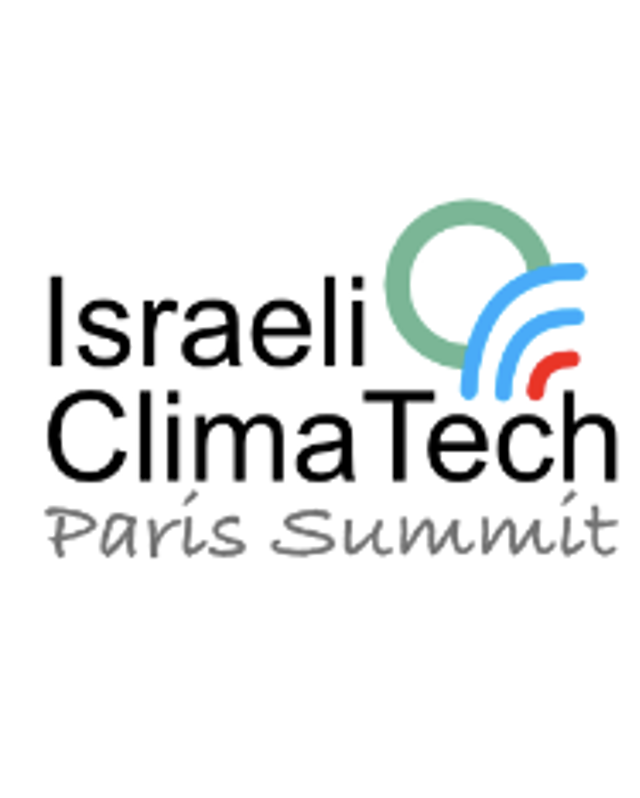Israël Valley : "Le bouclier technologique de l’innovation", nouvelle édition, par Edouard Cukierman et Daniel Rouach

[:fr]
Edouard Cukierman et Daniel Rouach ont réédité leur ouvrage Israël Valley, le bouclier technologique de l’innovation. Cette nouvelle édition offre une mise à jour complète des données et met en perspective les nouvelles technologies qui ont émergé depuis 5 ans qui ont complétement transformé le paysage high-tech mondial : sciences de la vie, intelligence artificielle, cleantechs, cyber sécurité… et les conséquences de la montée en puissance de la nouvelle puissance chinoise. Une présentation des 100 sociétés israéliennes à la pointe de l’innovation complète ce panorama.
Au-delà des récits des multi-start-up qui révolutionnent notre vie au quotidien, ce livre est aussi un témoignage objectif de l’état d’esprit d’un pays, dont l’adaptation, le multiculturalisme, la prise de risque et le développement de partenariats sont les principes clés.
En exclusivité pour Israël Science Info, voici quelques extraits :
« A l’heure où des villes comme New-York, Berlin, Londres et même Paris s’affichent comme des rivales crédibles de la Silicon Valley, Israël Valley doit faire face à plusieurs défis cruciaux : cet écosystème n’a pas encore permis, à ce jour, l’émergence de champions nationaux de grande taille et se définit davantage comme un modèle performant de production et de vente de start-ups que comme un pays qui s’imposerait structurellement aux autres.
Rappelons que 95 % des fonds investis dans les fonds de venture capital ne proviennent pas d’Israël mais de fonds de pension ou de compagnies d’assurance étrangères. Par ailleurs, la Silicon Wadi encourt les risques que sa consœur californienne connaît désormais : menace d’une prochaine bulle Internet, pénurie de main d’œuvre spécialisée explosion du coût de l’immobilier, pollution accélérée, fossé social accru entre les riches et les pauvres…
Pourtant le modèle d’Israël Valley a fait ses preuves et a été copié dans de nombreux pays. Ainsi le milliardaire chinois Li Ka-shing a investi 130 millions de dollars pour créer, dans le sud de la Chine, une filiale du Technion, l’Institut technologique de Haïfa, l’un des fleurons de l’entrepreneuriat technologique en Israël.
Mais une simple transposition de structures ne suffit pas pour dupliquer le succès d’Israël Valley car celui-ci est complexe.
L’écosystème israélien d’innovation et sa dynamique reposent sur un ensemble de tensions créatrices : elles traduisent l’extrême vulnérabilité d’un État isolé, de petite taille, quasiment dépourvu de ressources naturelles, qui ne peut assurer sa survie qu’à travers une capacité militaire incontestable. Cette situation a justifié une très forte intervention initiale de l’État, qui, par des actions directes (investissements) et indirectes (avantages fiscaux), a posé les bases d’un dispositif entrepreneurial remarquable, où se consolident mutuellement les différents paramètres constitutifs (grandes entreprises, investisseurs, armée, universités…) et qui se poursuit dans des actions portées par un secteur privé innovant.
Ce système est par ailleurs immergé dans un sentiment de communauté puissant qui dépasse les frontières du pays et assure à la fois une forte diversité de recrutement et une grande solidarité.
Israël bénéficie de cet important potentiel de croissance induit par des innovations disruptives dans les domaines de la génétique, la biotech, la biomédecine, la robotique, les nanotechnologies, la blockchain tout ce qui permet à Israël de défier les lois classiques de l’économie qui veulent que les retours d’investissement vont en s’amenuisant.
Israël a un avantage par rapport aux autres économies avancées dans le secteur le plus crucial de la projection de croissance, c’est-à-dire celui de la taille, l’orientation et l’éducation des 20-34 ans, ceux qui innovent, ceux qui prennent des risques, qui travaillent dur, qui consomment, qui produisent et qui défendent militairement. Ce groupe d’âge, responsable de 40% de la croissance économique est en train de diminuer en Europe et dans les autres pays avancés, mais il continue de se développer en Israël. Le taux de fertilité de ces autres pays avancés – autres qu’Israël – est inférieur à 2,1 enfants par femmes, ce qui est indispensable pour maintenir le niveau de population, alors que le taux de fertilité juif en Israël est supérieur à 3 et parfois peut aller à 3,5 enfants par femme.
De même, les exportations israéliennes ont pu éviter le ralentissement du commerce mondial en développant des niches qui sont uniques et qui sont essentielles à la majorité des pays, dans les secteurs de la sécurité, de la médecine, de la santé, de la clean-Tech, de la cybersécurité, de l’agriculture, de irrigation…
Le succès des start-up israéliennes va donc bien au-delà de l’impact économique qui se chiffre uniquement sur le montant des transactions réalisées, puisqu’il a un impact sur le tourisme avec un nombre croissant de visites d’hommes d’affaire internationaux en Israël (restauration, hôtellerie, immobilier), mais également sur de nombreux prestataires de service qui offrent un support aux entreprises de High-Tech israéliennes.
Donc même si seulement 3% de la population israélienne travaillent dans la High-Tech, cela a un impact important économique sur le PNB. La High-Tech est la locomotive de la croissance économique israélienne parce qu’elle représente plus de la moitié des exportations.
Ces ‘start-upistes’ qui vendent leurs sociétés très jeunes, réutilisent les ressources obtenues en créant de nouvelles entreprises, d’où cette dynamique assez unique au monde de croissance de l’économie liée directement au succès de la High-Tech.
Grâce à internet, ces entreprises peuvent avoir l’ambition de devenir des acteurs mondiaux (Mobileye, Waze), même pour celles qui ont des structures moins orientées ‘High-Tech’ mais qui sont devenues des leaders mondiaux dans le secteur de l’eau tel que Netafim ou encore IDE.
Ainsi, le nombre d’acteurs israéliens impliqués à l’international atteignant une taille critique (Teva en est un autre exemple) est de plus en plus important, ce qui nous permet de voir l’économie israélienne grandir avec une perspective d’avenir ambitieuse.
Il peut paraitre prétentieux de proclamer que l’on peut difficilement imaginer un monde sans Israël, car sans ce pays, nous n’aurions pas toutes les innovations, la technologie, la créativité, les progrès médicaux qui ont déjà été donnés au monde grâce à ce pays et nous manquerions toutes les contributions remarquables à venir.
Et c’est en cela que le modèle de l’Israël Valley peut affronter l’avenir avec force et confiance en son étoile ».
Le bouclier technologique de l’innovation, Editions EMS, en vente à la FNAC,sur Amazon
[:en]
Edouard Cukierman and Daniel Rouach have written a new issue of their 2013 book “Israel Valley, the technological shield of innovation”. This new edition offers a complete update of the data that occurs in Israel’s high tech environment;
It also puts into perspective the new technologies that have emerged over the past 5 years that have completely transformed the global high-tech landscape: life sciences, artificial intelligence, cleantechs, cyber security… and the consequences of the rise of the new Chinese power.
A presentation of the 100 Israeli companies at the forefront of innovation completes this panorama.
Beyond the stories of the multi-start-ups who revolutionize our daily lives, this book is also an objective testimony to a country’s state of mind, of which adaptation, multiculturalism, risk-taking and the development of partnerships are the key principles.
Abstracts:
At a time when cities such as New York, Berlin, London and even Paris are emerging as credible rivals of Silicon Valley, Israel Valley faces several crucial challenges: this ecosystem has not yet allowed the emergence of large-scale national champions and is defined more as a successful model for producing and selling start-ups than as a country that would structurally impose itself on others.
It should be recalled that 95% of the funds invested in venture capital funds do not come from Israel but from pension funds or foreign insurance companies. In addition, Silicon Wadi faces the risks that its Californian counterpart is now facing: the threat of a future Internet bubble, a shortage of skilled labour, an explosion in the cost of real estate, accelerated pollution, an increasing social gap between rich and poor…
Yet the Israel Valley model has proven its worth and has been copied in many countries. For example, Chinese billionaire Li Ka-shing invested $130 million to create a subsidiary of Technion in southern China, the Haifa Technological Institute, one of Israel’s leading technology entrepreneurs.
But a simple transposition of structures is not enough to duplicate Israel Valley’s success because it is complex.
The Israeli innovation ecosystem and its dynamics are based on a set of creative tensions: they reflect the extreme vulnerability of an isolated, small state, almost devoid of natural resources, which can only ensure its survival through an indisputable military capability. This situation justified a very strong initial intervention by the State, which, through direct (investments) and indirect (tax benefits) actions, laid the foundations for a remarkable entrepreneurial system, where the various constituent parameters (large companies, investors, the army, universities, etc.) are mutually consolidated and which continues in actions carried out by an innovative private sector.
This system is also immersed in a sense of a powerful community that transcends the country’s borders and ensures both a high diversity of recruitment and a high level of solidarity.
Israel benefits from this important growth potential induced by disruptive innovations in the fields of genetics, biotech, biomedicine, robotics, nanotechnologies, blockchain, everything that allows Israel to challenge the classic laws of economics that want investment returns to decline.
Israel has an advantage over other advanced economies in the most crucial sector of growth projection, namely the size, orientation and education of the 20-34 age group, those who innovate, those who take risks, those who work hard, those who consume, those who produce and those who defend militarily. This age group, responsible for 40% of economic growth, is decreasing in Europe and other advanced countries, but it continues to grow in Israel. The fertility rate in these other advanced countries – other than Israel – is less than 2.1 children per woman, which is essential to maintain the population level, while the Jewish fertility rate in Israel is higher than 3 and sometimes can reach 3.5 children per woman.
Similarly, Israeli exports have been able to avoid the slowdown in world trade by developing niches that are unique and essential to the majority of countries, in the sectors of security, medicine, health, clean technology, cybersecurity, agriculture, irrigation…
The success of Israeli start-ups therefore goes far beyond the economic impact, which is only in terms of the amount of transactions carried out, since it has an impact on tourism with an increasing number of visits by international businessmen to Israel (restaurants, hotels, real estate), but also on many service providers who offer support to Israeli high-tech companies.
So even if only 3% of the Israeli population works in the high-tech sector, this has a significant economic impact on GNP. High-Tech is the driving force behind Israel’s economic growth because it accounts for more than half of all exports. These « start-upists » who sell their companies at a very young age, reuse the resources obtained by creating new companies, hence this dynamic, quite unique in the world of economic growth, directly linked to the success of High-Tech.
Thanks to the Internet, these companies can have the ambition to become global players (Mobileye, Waze), even for those with less high-tech-oriented structures that have become global leaders in the water sector such as Netafim or IDE.
Thus, the number of Israeli actors involved internationally reaching a critical size (Teva is another example) is growing, allowing us to see the Israeli economy grow with an ambitious future perspective.
It may seem pretentious to proclaim that it is difficult to imagine a world without Israel, because without it we would not have all the innovations, technology, creativity, medical advances that have already been given to the world through this country and we would miss all the remarkable contributions that are coming.
And this is where the Israel Valley model can face the future with strength and have confidence in its model.
Le bouclier technologique de l’innovation, Editions EMS, en vente à la FNAC,sur Amazon
[:]






